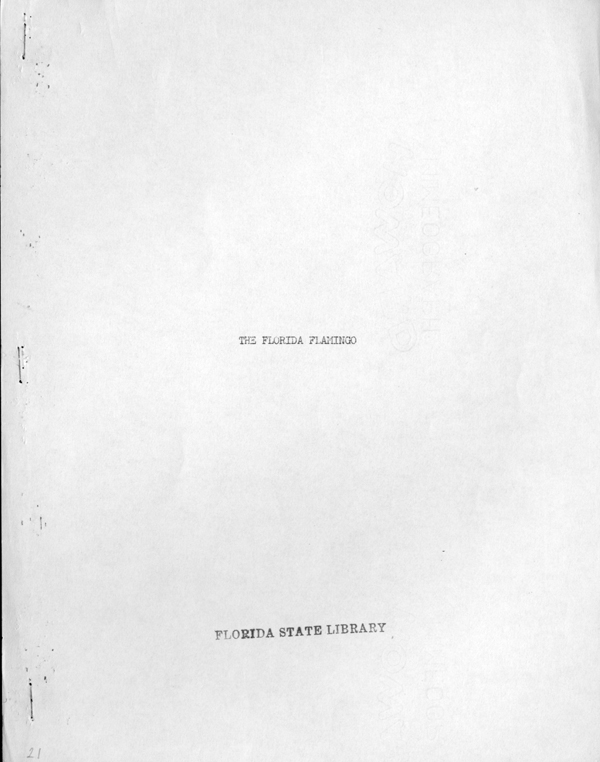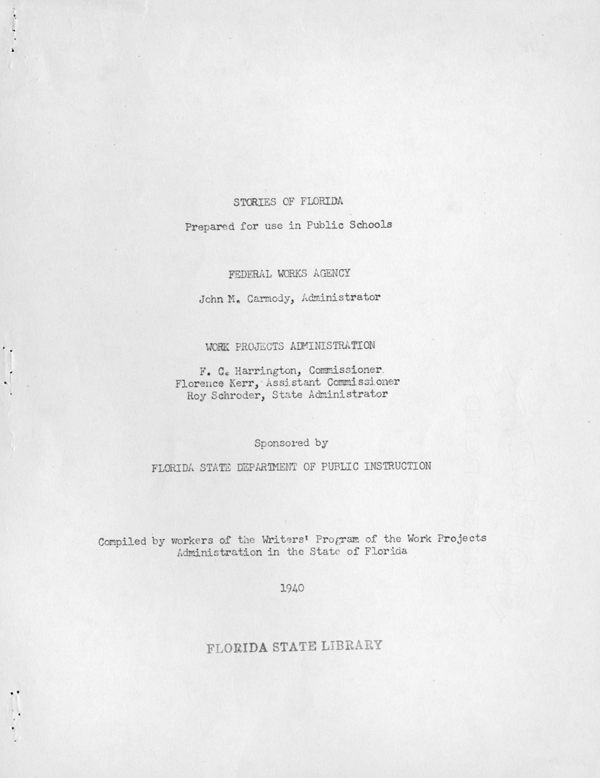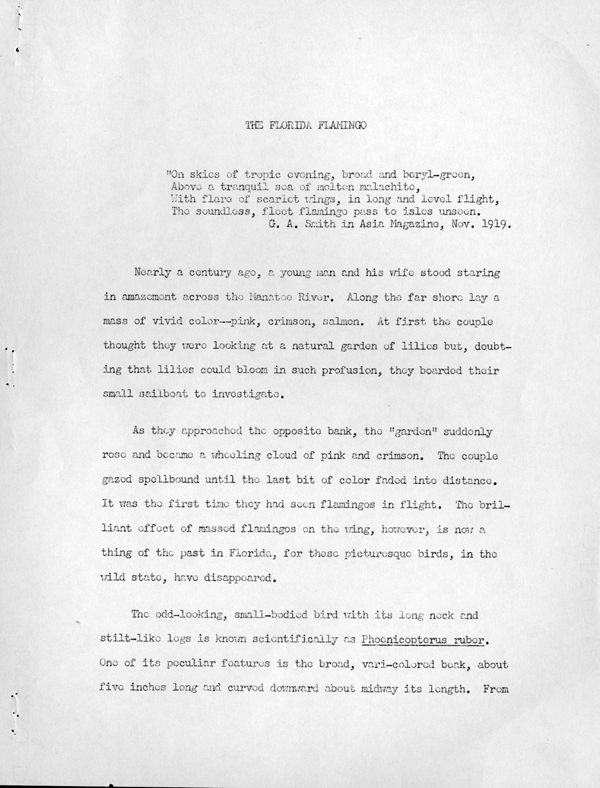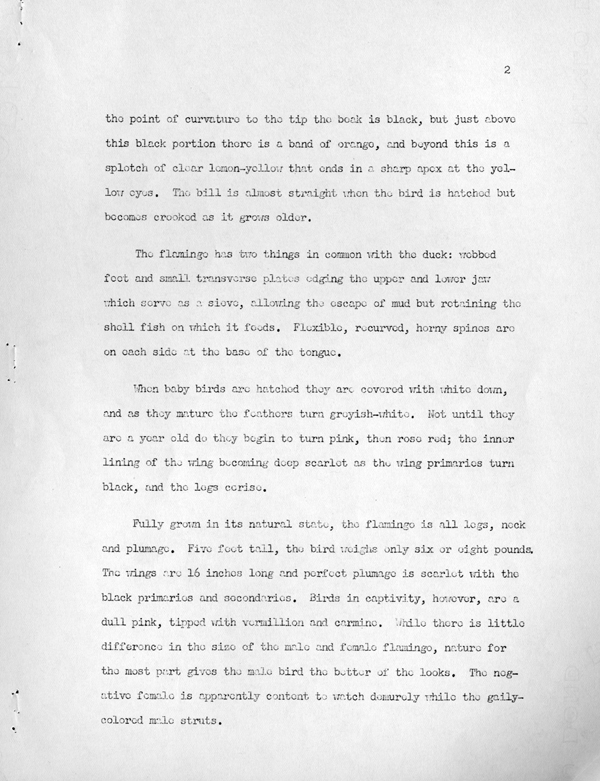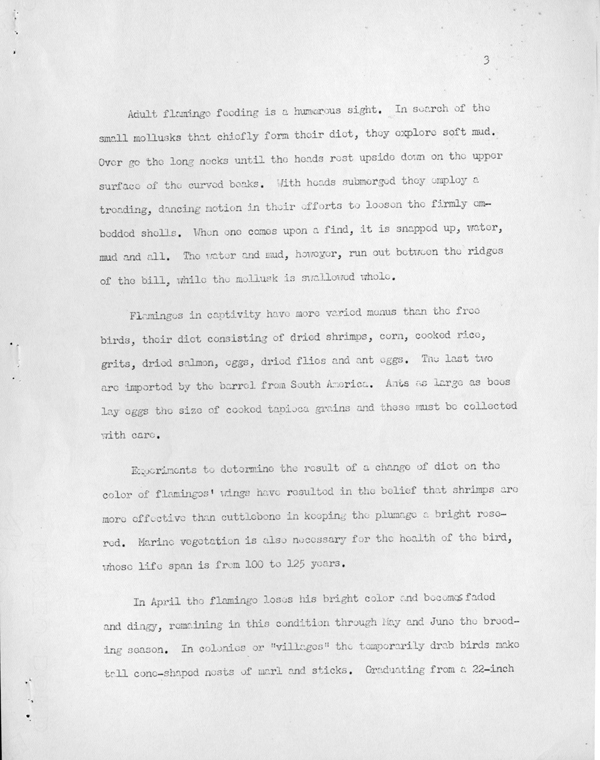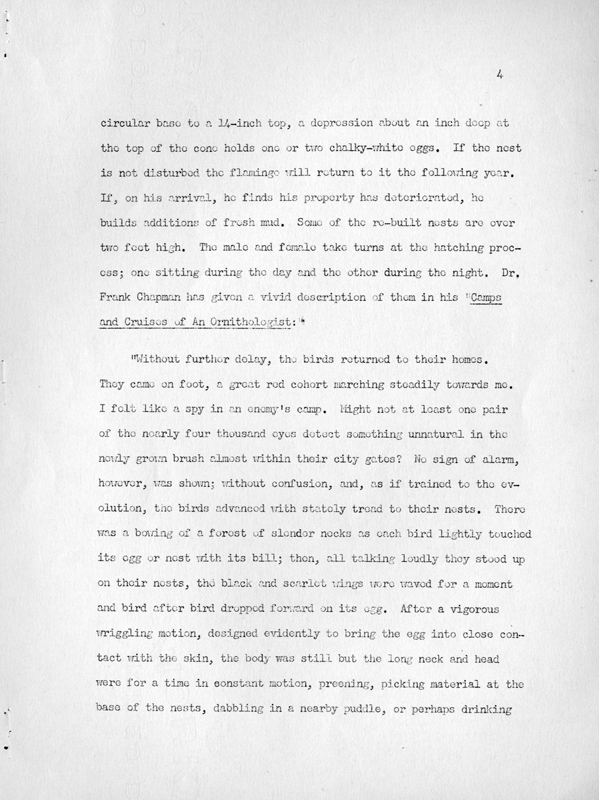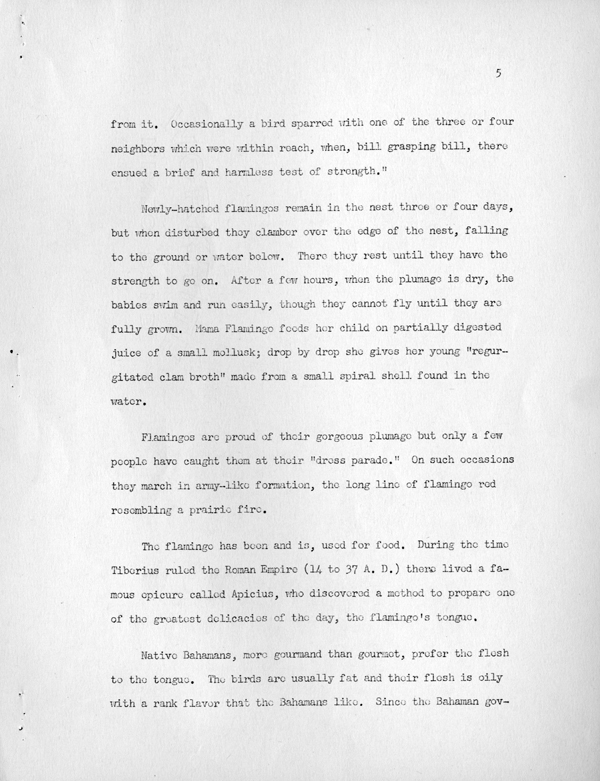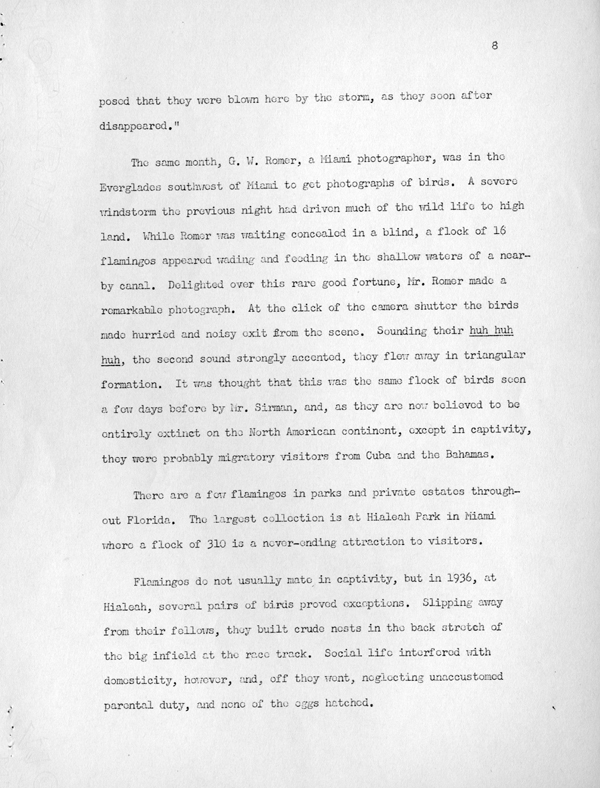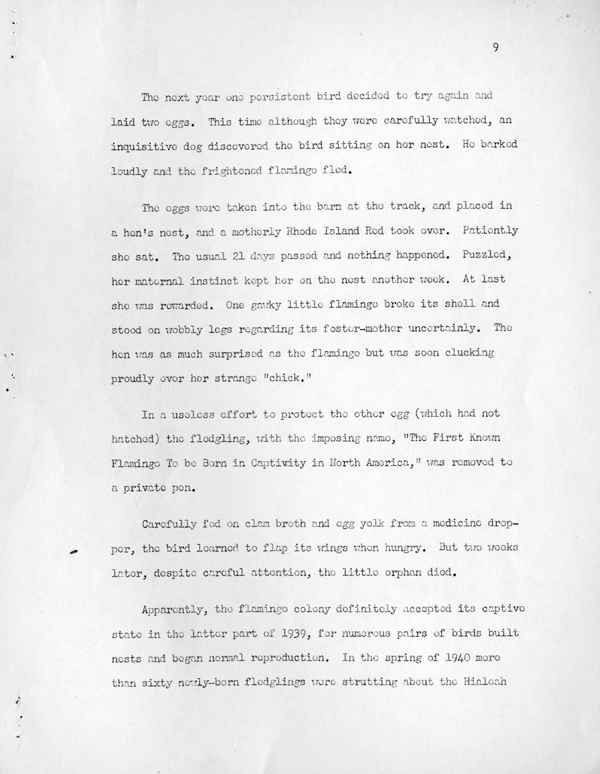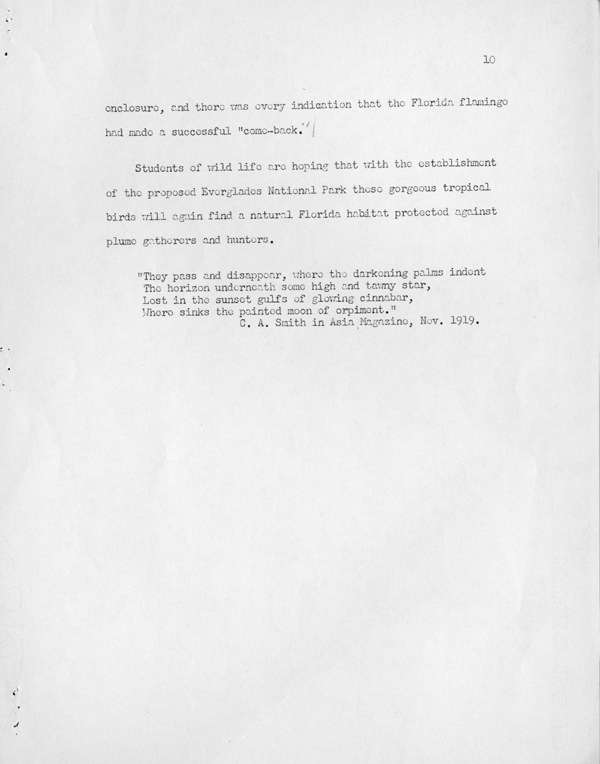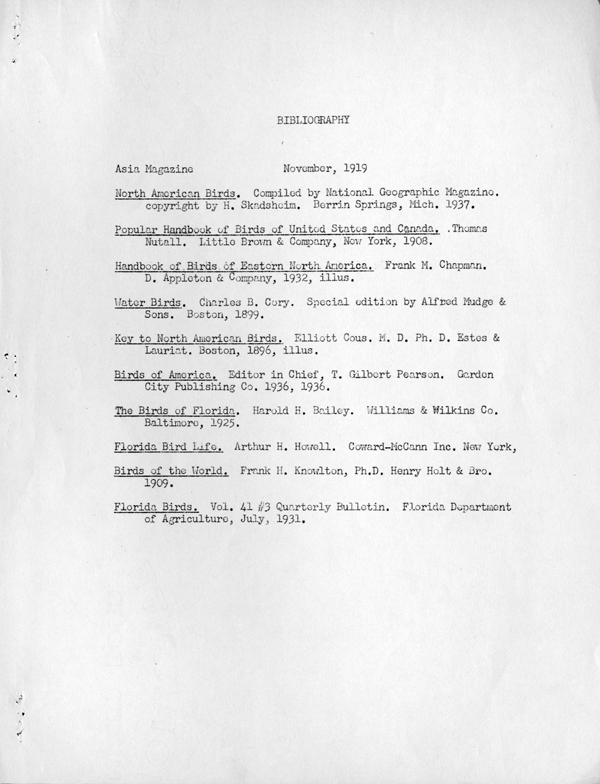Florida Memory is administered by the Florida Department of State, Division of Library and Information Services, Bureau of Archives and Records Management. The digitized records on Florida Memory come from the collections of the State Archives of Florida and the special collections of the State Library of Florida.

State Archives of Florida
- ArchivesFlorida.com
- State Archives Online Catalog
- ArchivesFlorida.com
- ArchivesFlorida.com
State Library of Florida
Related Sites
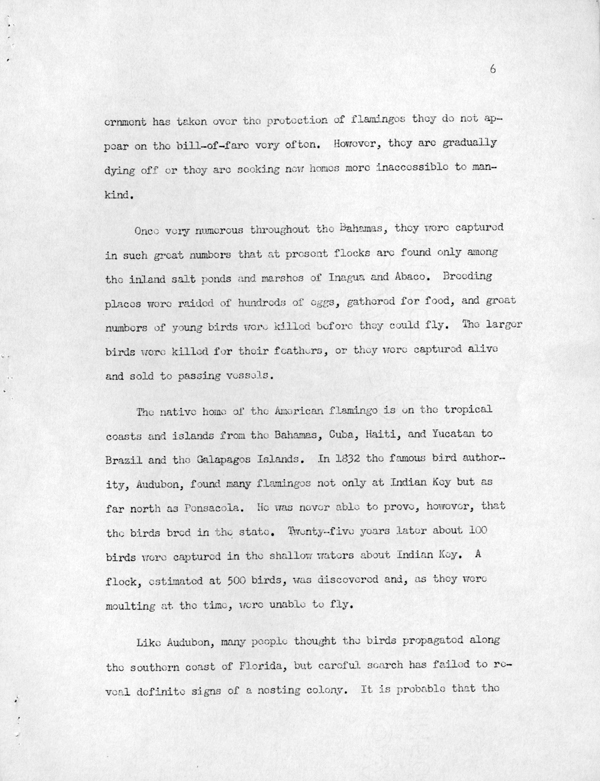
Description of previous item
Description of next item

Title
Published Date
ernment has taken over the protection of flamingos they do not appear
on the bill-of-fare very often. However, they are gradually dying off or
they are seeking new homes more inaccessible to mankind.
Once very numerous throughout the Bahamas, they were
captured in such great numbers that at present flocks are found only
among the inland salt ponds and marshes of Inagua and Abaco.
Breeding places were raided of hundreds of eggs, gathered for feed, and
great numbers of young birds were killed before they could fly. The
larger birds were killed for their feathers, or they were captured alive and
sold to passing vessels.
The native home of the American flamingo is on the tropical
coasts and islands from the Bahamas, Cuba, Haiti, and Yucatan to Brazil
and the Galapagos Islands. In 1832 the famous bird authority,
Audubon, found many flamingos not only at Indian Key but as far north
as Pensacola. He was never able to prove, however, that the birds bred
in the state. Twenty-five years later about 100 birds were captured in
the shallow waters about Indian Key. A flock, estimated at 500 birds,
was discovered and, as they were moulting [sic] at the time, were unable
to fly.
Like Audubon, many people thought the birds propagated along
the southern coast of Florida, but careful search has failed to reveal
definite signs of a nesting colony. It is probable that the
Title
Subject
Description
Source
Date
Contributor
Format
Language
Type
Identifier
Published Date
Image URL
Thumbnail
Transcript Path
Image Path
Image Path - Large
Chicago Manual of Style
The Florida Flamingo. 1940. State Archives of Florida, Florida Memory. <https://www.floridamemory.com/items/show/181517>, accessed 4 January 2026.
MLA
The Florida Flamingo. 1940. State Archives of Florida, Florida Memory. Accessed 4 Jan. 2026.<https://www.floridamemory.com/items/show/181517>
AP Style Photo Citation

 Listen: The Blues Program
Listen: The Blues Program